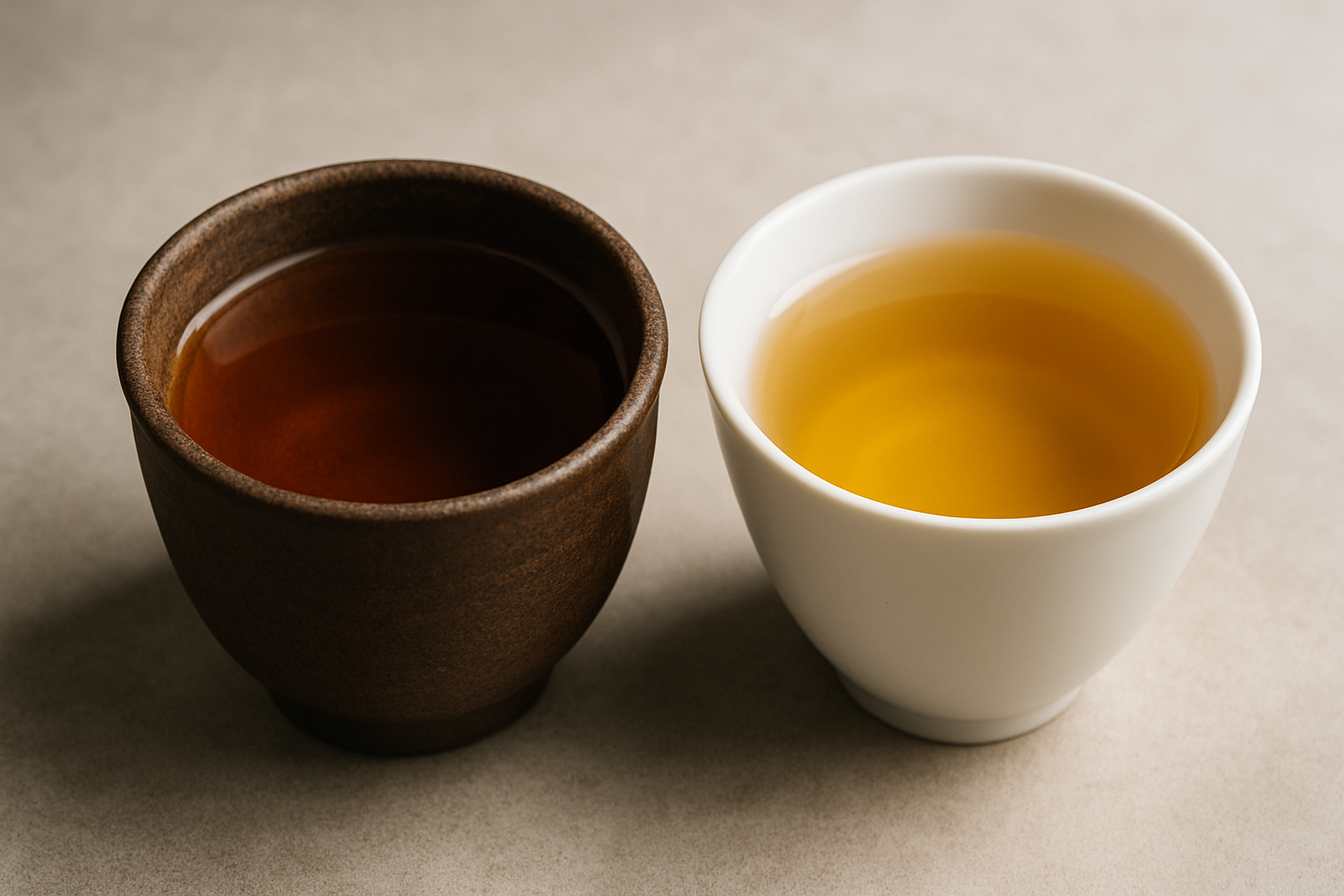Steep Secrets: How Vessel Texture Shapes the Tea Experience (Part 2)

In tea, the leaf may be the star, but the vessel is the stage on which the performance unfolds. Beyond the familiar considerations of shape and clay type, there are three quieter forces that leave their imprint on the brew: glaze, porosity, and thickness. These may seem like small technical details, yet in practice they act as sensory levers, shaping aroma, texture, and the evolution of flavor over time.
By tuning into these subtleties, you move from simply preparing tea to crafting it. Each pour becomes less of a habit and more of an exploration, where the vessel takes on the role of collaborator in the unfolding story of the leaves.
Glaze: The Dialogue Between Surface and Leaf
Glaze determines how much the vessel participates in the brew. A glazed surface is smooth and sealed, preventing absorption, and therefore preserves the tea’s character in its purest form. This makes glazed vessels ideal for highly aromatic teas such as floral oolongs or delicate whites, as well as for tasting sessions where clarity matters most. Every note remains intact, allowing you to hear the tea’s voice without alteration.
Unglazed clay tells a different story. Because it is porous, it slowly absorbs oils and compounds from each session. Over time, this “seasoning” subtly alters the profile of the teas brewed in it, rounding sharp edges and softening astringency. In exchange, however, it may gently mute the highest aromatic notes. What you gain is depth and integration, a sense of continuity between brews, as if the pot itself has learned the tea’s language and speaks it back in a softened tone. The choice between glazed and unglazed is not about right or wrong but about what part of the leaf you want to emphasize: purity and brightness, or evolution and depth.
Porosity: The Vessel’s Invisible Influence
Porosity is the vessel’s ability to absorb, and this invisible quality can shape the brew in lasting ways. High-porosity clays such as Yixing or Chaozhou are prized for their ability to mellow bitterness and enhance mouthfeel. They absorb trace compounds that would otherwise dominate the cup, returning a rounder, more integrated liquor. Over many sessions, these pots develop a relationship with a single tea type, rewarding the drinker with consistency and warmth. A roasted oolong or aged pu’er, for example, becomes smoother and more harmonious when brewed in porous clay, as the vessel itself takes part in balancing the flavor.
Low-porosity materials like porcelain or fully glazed ceramics preserve purity by keeping the leaf unmediated. This makes them especially suitable for teas that rely on delicacy—greens, whites, or fresh spring oolongs—where fragrance and clarity are the heart of the experience. In such vessels, you can appreciate every fleeting note, from the grassy top edge of a sencha to the floral whisper of a Silver Needle. Porosity, though unseen, determines whether the cup highlights softness and depth or brilliance and precision.
Thickness: The Quiet Power of Thermal Mass
Wall thickness, too, quietly governs how tea expresses itself. A thick-walled vessel retains heat with determination, creating a stable environment in which heavier teas flourish. Black teas, shu pu’er, and other richly structured leaves reveal their strength and sweetness when given the warmth of such pots, which encourage extraction of deeper compounds without fluctuation. The result is a liquor with body and resonance, something that feels anchored and complete.
Thinner vessels, in contrast, lose heat quickly, and in doing so they invite nuance and control. Green teas and lighter whites, which can easily turn bitter if overheated, benefit from this cooling pace. The rapid loss of heat allows delicate compounds to remain intact, leaving flavors that are bright, crisp, and refreshing. In practice, the same leaves brewed in a thick-walled vessel may feel heavy and blunt, while in a thinner pot they taste lively and articulate. Thickness becomes the silent conductor, determining the tempo at which flavor compounds are released.
Portman Tea’s Perspective: Crafting with Intention
At Portman Tea, we see every vessel as part of the story. Glaze, porosity, and thickness are not just physical traits but active participants in how a tea unfolds. One highlights clarity, another rounds edges, another steadies heat. Together they create the context in which leaf and water find expression.
By choosing vessels with intention, you create a more expressive and mindful brew. It is not about controlling every variable or forcing the tea to conform. It is about listening to what the vessel reveals and allowing the leaf to speak in its fullest voice.
Brewing with Texture in Mind
To steep with awareness is to notice how the vessel influences the experience. A glazed teapot presents the tea in all its brilliance, while an unglazed one brings softness and integration. A porous clay pot nurtures depth and body, while porcelain preserves clarity and fragrance. A thick wall sustains warmth for teas that need it, while a thin one cools quickly to protect delicate notes. These are not rules, but invitations to observe how different conditions reveal different truths.
Tea is always a conversation. The leaves, the water, and the vessel each play their part. When you begin to notice the quiet contributions of glaze, porosity, and thickness, you find that even the stage beneath the star leaves its mark. Steeping becomes not just a way to prepare tea, but a practice of discovery in which the vessel itself is another voice in the dialogue.
Go back to Part 1: Shape and Material to see how form and clay guide aroma and body, or read Part 3: The Final Pour to learn how pouring turns brewing into a mindful craft.
